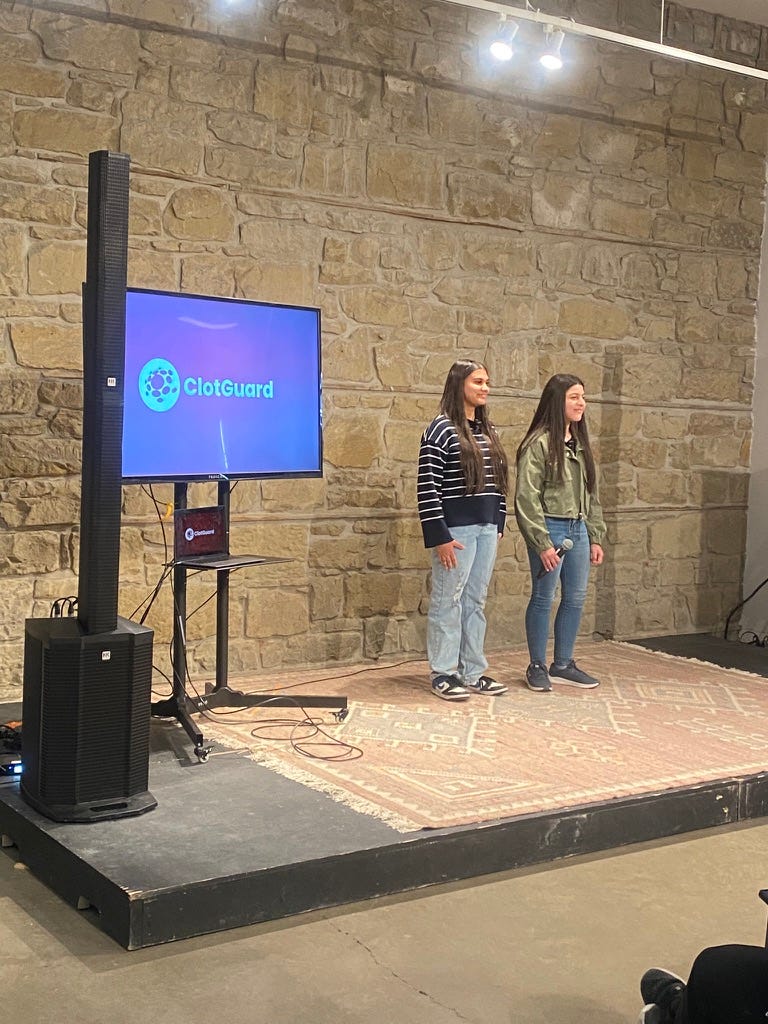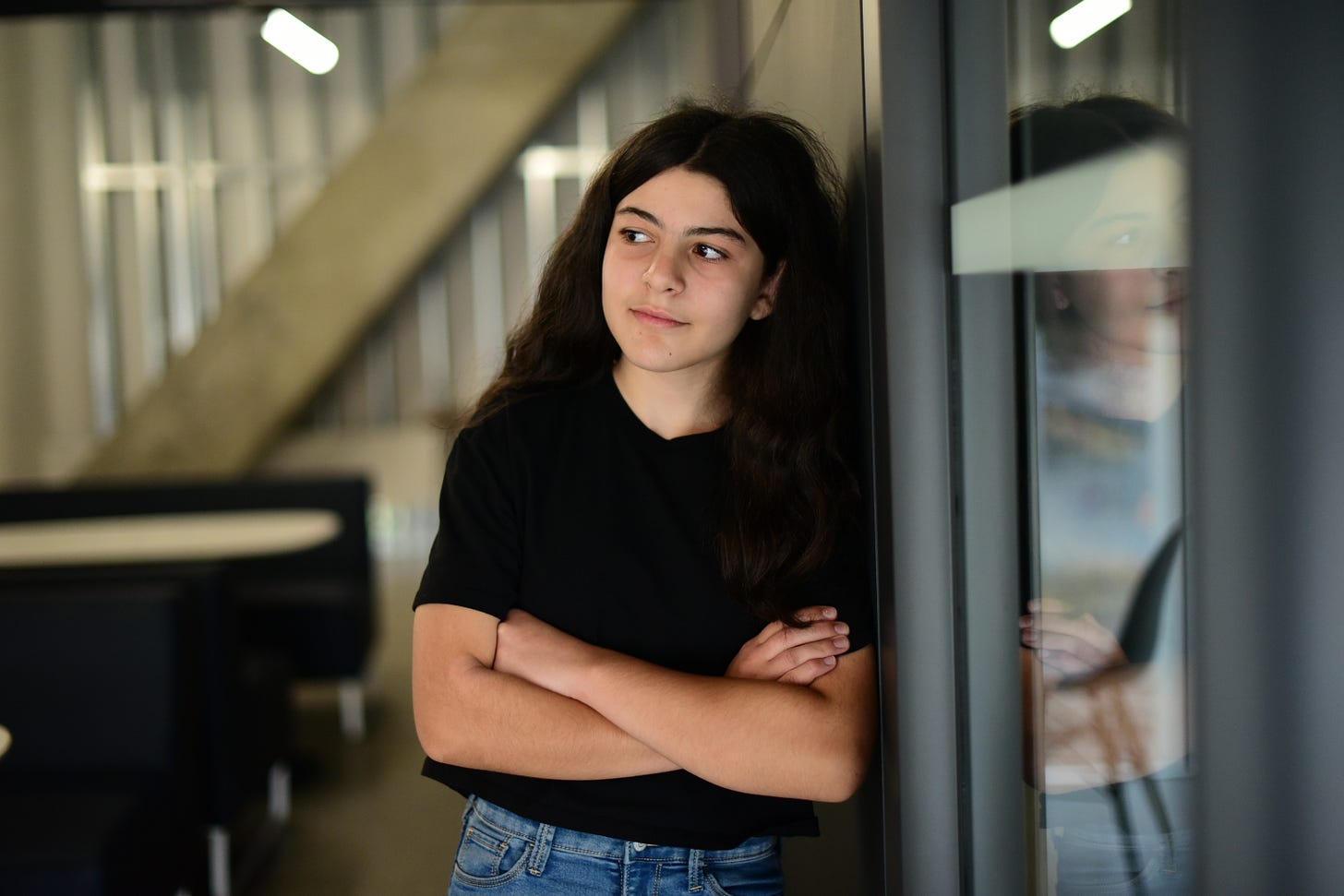To excel in what’s important, I need to prioritize
May had a lot of different stuff going on, from working on my focus project, to finishing our moonshot, and then training for my fight in June, as well as stuff in school and other side projects. There was a lot “to do”, but not all of it was important to me. I had to really reflect on what was important, and that meant sometimes sacrificing some other projects to make room for the really important ones. It was sometimes difficult because I was really excited to work on everything, but once I got into a routine that worked, I figured out that making priorities for the really important things would be worth it in the end.
Who Am I?
I’m Isavella, an ambitious and driven 14-year-old who has recently been accepted into TKS (The Knowledge Society), and I want to share my experience with all of you! Throughout these monthly newsletters, you will see some of my accomplishments and downfalls, not to mention other things going on in my life. Not everything comes easy, and I won’t make it look easy.
This Month I…
Presented our Moonshot Project at the Moonshot Presentations
The first bit of May was to wrap up our moonshot for the presentations that happened on May 10th. We had a panel of judges come to judge and evaluate each of our moonshot presentations, as well as do an innovation panel to talk about the innovation opportunities in Calgary for younger people.

That was the in-person event, but there was also an online event with a select group of moonshots (we were one of them) who got to present their work in front of an actual person from The Moonshot Factory.
Our moonshot was called ClotGuard, and we are 10x-ing the amount of time hemorrhage victims have until the injury becomes deadly. Currently, it takes 2-5 minutes for hemorrhage to become deadly, but it also takes roughly 7-10 minutes for help/initial treatment to arrive. Because of this, roughly 80% of DOW (death of wounds) deaths on the battlefield are due to hemorrhage and excessive blood loss. This goes to show that the deaths aren’t because the treatments aren’t effective, but rather, there isn’t enough time to administer them. This results in a lot of hemorrhage deaths being considered preventable, which is a shame.
Our product, ClotGuard, utilizes nanotechnology to deliver freeze-dried platelets directly to the site of bleeding to stimulate clot formation. The nanobots + freeze-dried platelets are stored in a pre-applied patch (similar to an existing diabetes patch) that has sensors to detect excessive blood loss. Once hemorrhage is detected, the patch will release the nanobots carrying the freeze-dried platelets. The nanobots themselves also have sensors to locate where the bleeding is coming from, and they navigate the bloodstream until they locate the bleeding site. Once there, the platelets will be released to stimulate further clot formation.
We got first place in the online moonshot presentations and second place in the in-person moonshot presentations. It was a great experience to get to present our work in front of a panel of judges and bring ClotGuard to life. I worked on this project alongside Sophia Dhami and Arissai Filleul, and they were amazing throughout the entire process.
You can read here for an overview of the moonshot presentations. You can also go to this post for more resources about our moonshot, ClotGuard.
Finished Building My CRISPR-Cas3 Phage Vector System Project
This month, I got to finish building the phage vector carrying the CRISPR-cas3 system, as well as test it in different simulations to see how effective it is at killing E. coli CFT073.
I had to refine the gRNAs I had previously found, but after I came up with a better code and was able to get more accurate sequences. The last step in building the phage vector was looking for a proper place to insert my CRISPR-Cas3 system within its genome. Once that was done, my phage vector was completed.
I then ran three simulations to evaluate all aspects of this new phage vector as a treatment for E. coli CFT073. The three simulations tested:
How effective is Killian phage at delivering CRISPR-Cas3 to E. coli CFT073?
How effective is the CRISPR-Cas3 system at knocking out the essential genes of E. coli CFT073?
How effective is the entire treatment process (from initial infection to gene knockout) at degrading the populations of E. coli CFT073?
Overall, the results from the simulations were positive, and the phage vector was successfully delivering the CRISPR system, as well as the system was able to effectively cut the essential genes.
The next step for this project is to certify it with 2 industry professionals, as well as write a wrap-up article for it.
Growth
My growth this month was prioritizing and juggling all the stuff I had to do, and putting the most effort into the stuff that was really important to me and that would impact me the most in the long run. That’s why I didn’t feel like I missed out on much this month, because I prioritized so well and got the important stuff done. I also feel like I had a lot of growth in my focus project. I was able to buckle down and get it completed properly. The motivation was there, and I built something I’m very proud of.
Shout-Out!
I want to give a shout-out to Sophia Dhami and Arissai Filleul for working so hard on the moonshot project to get us the results we got!
In Other News…
I’ve been training really hard for my fight coming up in mid-June in Iowa, so I’m really excited to be heading out for it soon.
What’s Next?
I’ll be finishing up some of the other deliverables I have for my focus project, as well as getting it certified and presenting it to some of the contacts I have in the field. As with ClotGuard and our moonshot, we are looking to see if we can turn this into a real company and start building something real out of it, so that will be a very exciting path for us.







